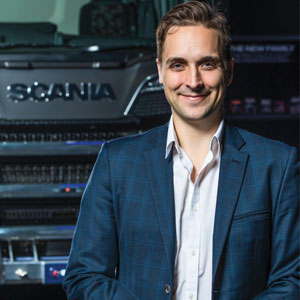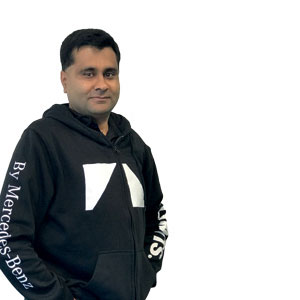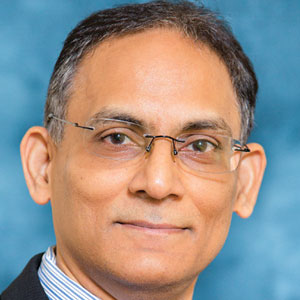THANK YOU FOR SUBSCRIBING

How The Intermittency Challenge could bring the Automotive and Power Generation Sectors together for a more Sustainable Future
Alexander Mastrovito, Head of Sustainable Transport Solutions, Scania Group


Alexander Mastrovito, Head of Sustainable Transport Solutions, Scania Group
The future of transportation revolves around two things—zero emissions and maximum efficiency. Today that future—even though that future is nothing new—looks very much electric. Electric vehicles have been around as long as the ones propelled by the internal combustion engine. But, at one point in the early 20th century, EVs were outcompeted by the inherent practicality, abundance, and energy density of petrol and diesel powered vehicles. At present, with pollution and climate challenges facing the world the electric vehicle seems due for resurgence. At the same time the need for a complete rethink of our national energy grids is closing in as well—modern renewables like wind and solar are so fundamentally different from current power generation methods that they are inherently incompatible with existing infrastructure when they reach a substantial share of total power generation.
These two developments put together might perhaps become the biggest change to the fabric of our societies since the dawn of the industrial revolution, and they are not happening in isolation from one another, no, they become inextricably linked through a shortcoming of renewable connected to power generation called intermittency.
The major difference between renewables like solar and wind and traditional power is that they are not always available at the same time as we need them. Electricity in itself is a resource that is best used fresh, the grid powers up and down almost instantly as the need for power fluctuates—any stoppage, detour or storage is a detriment to efficiency. However, because solar and wind is generated when we might not need it, or not generated when we do need it—storage is crucial. Bridging this gap between usage and production is the intermittency challenge.
Transport and renewable could go hand in hand towards a circular and sustainable energy system for both mobility and power
Enter the battery—batteries could act as intermediary storage holding the electricity for when we need it. But, even if we put all the worlds’ currently existing batteries to this use, they could barely store a 10 minute reserve of electricity—and almost all of them are in use for something else.
Here is where the current developments of the automotive industry and power generation converge. The expected boom in EVs together with the need for a larger share of renewables in power generation seems to be able to solve each other’s problems. At least conceptually.
The idea here is that cars, trucks, and buses could act as smart dynamic storage units for electricity whenever they are connected to the grid. Each essentially being a floating carrier of energy that serves both as a means of transport and as a way to balance the grid—in practice this means that as soon as a vehicle is not used for moving people or goods it should be connected to the grid.
However, the grid—already called the largest and most complex machine in the world—would suffer immensely from adding millions of micro storage units to it, as it would increase the complexity further. The first challenge will just be to provide enough entry points, essentially bidirectional charging stations—allowing and incentivizing vehicles to dock with the grid any time they are stationary. Secondly, the traditional way of grid management will have to be supported by strong Artificial Intelligence solutions that can both direct energy to and from storage units as well as predict demand and supply. Finally, a peak in electricity use would in the best of worlds not overlap with a peak in transport use. But realistically, when the transport peak subsides and domestic or commercial use of electricity picks up, vehicles would likely be empty and in need of a top up—further impacting peak electricity demand if smart scheduling of charging is not implemented in time.
However, regardless of actual, hard to predict, real world usage patterns—it seems clear that today’s grid is nowhere near up to the task of supporting an electric transportation system. There are at present 1.25 billion combustion engine vehicles in the world. If they all were to be electrified (at an average of 15kWh/100km@15kkm/year), at least an additional 3000 TWh of electricity would be needed, amounting to the need for roughly a 15 percent increase in global electricity output.
So in conclusion, transport and renewablecould go hand in hand towards a circular and sustainable energy system for both mobility and power. But at the same time the scale is monumental, so the only way forward where the private sector can achieve any substantial shift, is with strong governance and heavy—sustained - momentum in popular opinion.
Weekly Brief
I agree We use cookies on this website to enhance your user experience. By clicking any link on this page you are giving your consent for us to set cookies. More info
Read Also













